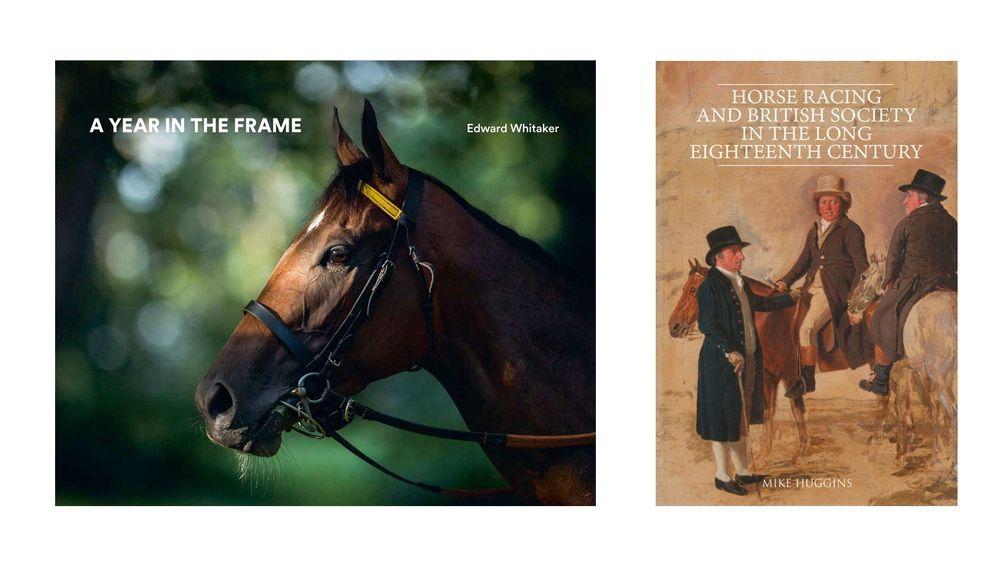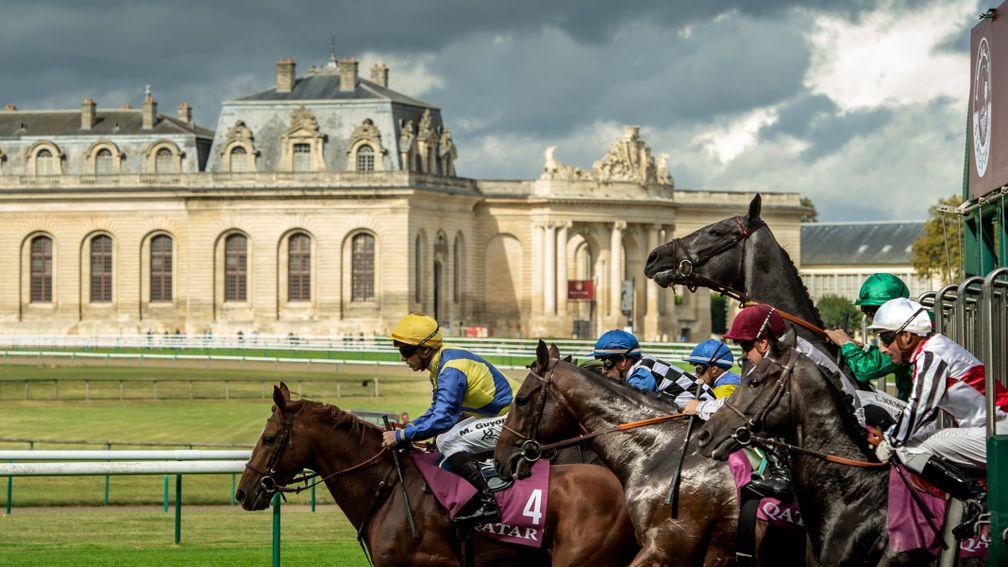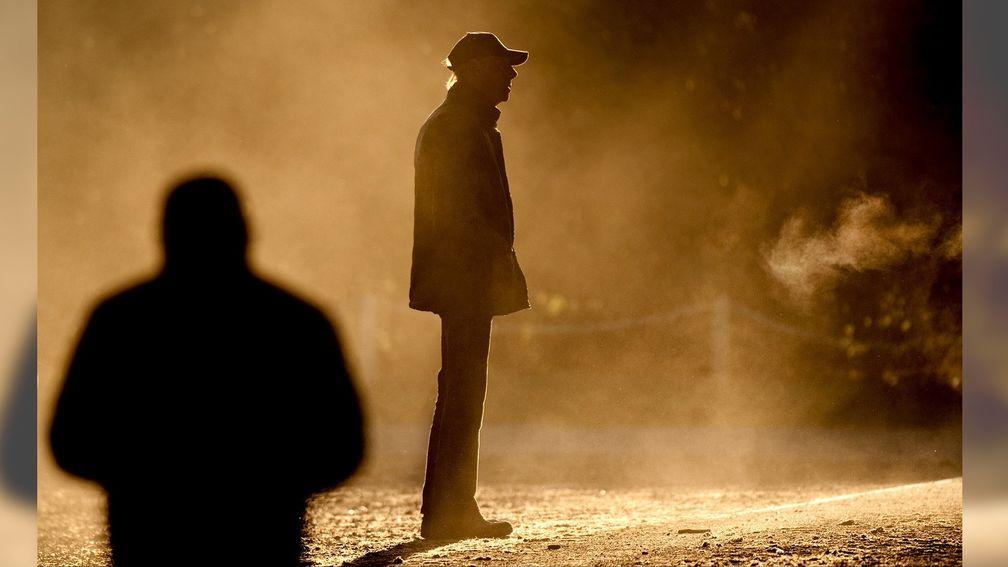Photographic perfection encapsulated in remarkable celebration of sport

A Year in the Frame by Edward Whitaker
£25, published by Racing Post
If I was compiling a list of the things I have loved most about being editor of the Racing Post for the past 11 years, working with the astonishingly beautiful photographs of Edward Whitaker would be extremely close to the top.
It was once said of Alastair Down that he is not just the best racing writer or even the best sports writer out there, he is simply the best writer, and it is easy to feel the same about Edward, who is the undisputed king of racing photographers, and has been voted the best sports photographer but is arguably as good as anyone in any sphere with a camera on his shoulder.
His brilliance is perfectly encapsulated in A Year In The Frame, the fourth collection of his marvellous work and to my mind the finest.
It really shouldn’t be. Edward has been doing this for a long time and when you have done more than 30 Cheltenhams and 30 Royal Ascots there must be a temptation to rely on tried and trusted positions from which he knows he will be able to capture a killer image.

But what helps make Edward so special is that he never rests on his laurels and never believes he has exhausted his options when it comes to finding a new angle.
That is abundantly clear throughout this remarkable book, not least in the incredible shot of racing at Chester with the vista of the city in the background, which he took with the help of a 70-metre cherry picker.
There are no fewer than 174 pages of outstanding, stunning photographs to enjoy, presented month by month which enables readers to enjoy a long, leisurely feel for the hugely varied global racing landscape as it unfolds from January through to December.
One of Edward’s many attributes is his ability to capture horses and humans with equal skill, and if I was choosing a person picture that sums up his outstanding nose for an eyecatching image it would be the shot of JP McManus standing alone on the platform at Plumpton station, catching the train back to town with a trophy he collected for yet another winner stowed safely in a carrier bag.
But trying to select an overall favourite photograph from so many exceptional choices quickly becomes an impossible task. There truly are far too many to pick from.
As my time as editor comes to an end I’d like to use this review to pay tribute to Edward as a colleague and friend. This is not someone who just snaps away, submits his pictures and heads home.

He is justifiably proud of his work and communicates closely with the picture desk to help Racing Post readers get the best of his work. When his number comes up on my phone it is almost always an indication that he has taken some great pictures and wants to ensure they get due prominence.
I have lost count of the times he has rescued an unpromising midweek edition by supplying a picture that has created an attention-grabbing front page, but will hopefully enjoy marvelling at his work from afar for many years to come.
Edward loves racing and loves horses, and if you do too it is almost impossible that you will fail to enjoy this exquisite collection of pictures that show what a wonderful sport racing is and how lucky it is to have a master like Edward Whitaker to capture its essence so perfectly.
Bruce Millington
Impeccably researched authoritative account
Horse Racing and British Society in the Long Eighteenth Century by Mike Huggins
£60, published by The Boydell Press
Life in 18th century Britain was lived in close proximity to horses, with horse ownership common, so it is not surprising that horseracing as we know it was created at that period.
It was unchallenged as the national sport and this new book analyses the cultural, political, economic and social factors that influenced it at the most crucial period of its development.
'The Long Eighteenth Century' of the book's title lasted from the restoration of Charles II to the Battle of Waterloo (1660-1815), with the sport growing from an unregulated pastime for the aristocracy, racing mature horses in matches of four-mile heats, to a more modern activity with newly evolved thoroughbreds running in shorter races like the Derby, inaugurated in 1780.
Gambling was central to racing's increasing popularity, and major improvements in road communications enabled more towns to hold race meetings. They brought in crowds that boosted local trade and prosperity – and also attracted thieves, pickpockets, rogues and vagabonds.
They would bet heavily, not just on the horses but also on ancillary sporting events. A day at the races could include boxing, wrestling and cock fighting, and was comparable to a modern meeting whose main attractions might be music and alcohol.
Racing and politics were closely intertwined, and the prime ministers who were prominent racehorse owners included the Duke of Devonshire and the Marquess of Rockingham.
In 1762 they took part in talks at Newmarket races about the fate of the Whig government, and three years later Rockingham came to power after deals were made at Newmarket and Ascot. By contrast, David Cameron played down his connections with the sport in order not to appear a toff.
The book also analyses racing's increasingly complex organisation and regulation as the Jockey Club evolved from a Newmarket clique to become the overall governing body. It cites recent research showing that the generally accepted year of 1750 for the Club's foundation (repeated on its website) is too late, and mentions a more plausible date of 1717.
This is an expensive academic book on an esoteric subject, impeccably researched as one would expect of an award-winning author who is a professor of cultural history. The bibliography alone takes up 22 pages.
It is not a compulsive page-turner, but an authoritative tome full of information and insight into racing's rich history.
John Randall
Members can read the latest exclusive interviews, news analysis and comment available from 6pm daily on racingpost.com
Published on 3 November 2018inFeatures
Last updated 15:34, 5 November 2018
- The Gambling Commission has launched its new corporate strategy - but what are the key points?
- 'It was tragic it happened to Paddy but it was a good thing for the jockeys who followed - good came out of bad'
- Acquisitions, exits and retail resilience - what we learned from Flutter and 888's results
- The classic star named after Steve Harley: how Cockney Rebel proved to be a life-changer
- 100 years of the Gold Cup: John Randall ranks the greatest winners - and the worst
- The Gambling Commission has launched its new corporate strategy - but what are the key points?
- 'It was tragic it happened to Paddy but it was a good thing for the jockeys who followed - good came out of bad'
- Acquisitions, exits and retail resilience - what we learned from Flutter and 888's results
- The classic star named after Steve Harley: how Cockney Rebel proved to be a life-changer
- 100 years of the Gold Cup: John Randall ranks the greatest winners - and the worst